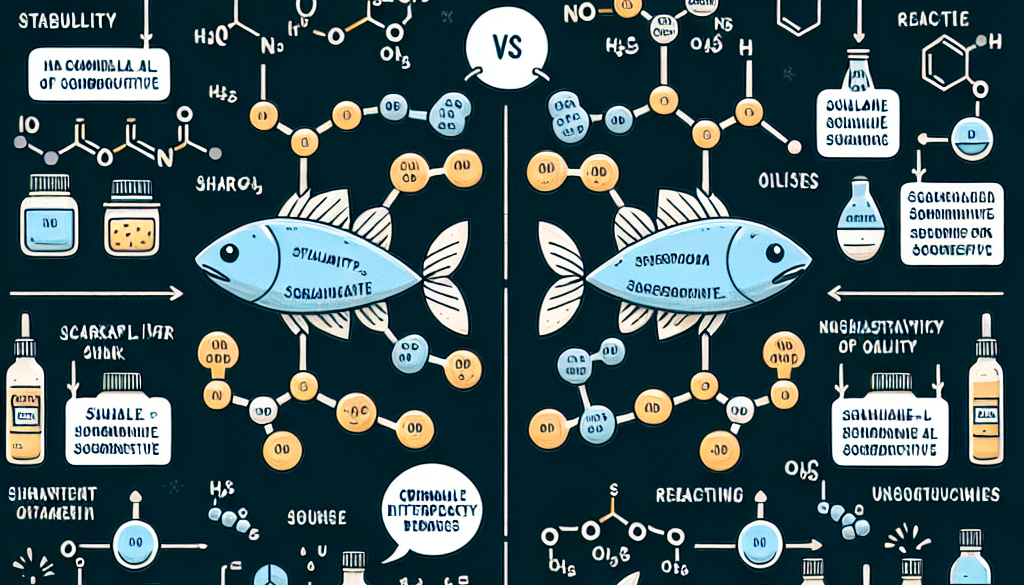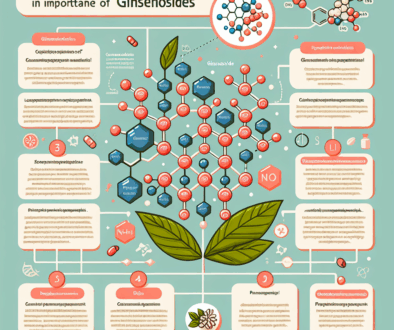Squalane vs Squalene: What’s the Difference?
-
Table of Contents
- Squalane vs Squalene: Understanding the Key Differences
- Origins and Sources
- Stability and Shelf Life
- Benefits in Skincare
- Environmental and Ethical Considerations
- Applications Beyond Skincare
- Choosing the Right Ingredient for Your Skincare Routine
- Conclusion: Squalane Takes the Lead in Skincare
- Enhance Your Health with ETprotein’s Premium Protein Products
Squalane vs Squalene: Understanding the Key Differences

When it comes to skincare ingredients, the conversation often revolves around the benefits and uses of various compounds. Two such ingredients that frequently cause confusion due to their similar names and related properties are squalane and squalene. While they may sound alike and are connected in terms of origin and function, there are distinct differences between the two. This article will delve into the nuances of squalane and squalene, highlighting their unique characteristics, benefits, and applications in skincare and beyond.
Origins and Sources
Squalane and squalene have natural origins, but their sources can vary significantly. Squalene is a naturally occurring lipid produced by our own skin cells, as well as found in various plants and animals. Historically, squalene was harvested from shark liver oil, which raised sustainability and ethical concerns. Today, however, plant-based sources such as olives, amaranth seeds, rice bran, and sugarcane are commonly used to obtain squalene for cosmetic purposes.
Squalane, on the other hand, is a hydrogenated form of squalene. This means that squalene undergoes a saturation process to become squalane, which is more stable and suitable for use in skincare products. Like squalene, squalane can be derived from both animal and plant sources, but ethical and sustainable practices have led to a preference for plant-derived squalane.
Stability and Shelf Life
The primary difference between squalane and squalene lies in their molecular stability. Squalene is an unsaturated oil, which makes it prone to oxidation when exposed to air and light. This oxidation can not only reduce the effectiveness of squalene but also potentially lead to skin irritation or the formation of harmful compounds.
Squalane, being fully saturated, is much more stable. It does not oxidize easily, which means it has a longer shelf life and is less likely to cause skin irritation. This stability makes squalane a more favorable ingredient in skincare formulations.
Benefits in Skincare
Both squalane and squalene share similar benefits for the skin, but their different properties can influence their use in skincare products.
- Moisturization: They are exceptional emollients, meaning they can soften and smooth the skin, providing deep hydration without leaving a greasy residue.
- Anti-Aging: Both compounds help to reduce the appearance of fine lines and wrinkles by replenishing the skin’s lipid barrier, which can diminish with age.
- Antioxidant Properties: Squalene has antioxidant properties that can protect the skin from free radicals. However, due to its instability, these benefits are more reliably obtained from squalane in skincare formulations.
Given its stability, squalane is more commonly found in skincare products such as creams, lotions, facial oils, and serums. It is suitable for all skin types, including sensitive and acne-prone skin, due to its non-comedogenic nature.
Environmental and Ethical Considerations
The shift from shark-derived squalene to plant-based sources for both squalene and squalane production has been a significant step forward in terms of sustainability and ethics. The cosmetic industry has increasingly embraced these plant-based alternatives to reduce the environmental impact and address animal welfare concerns.
Applications Beyond Skincare
While squalane and squalene are primarily known for their roles in skincare, they also have applications in other industries:
- Pharmaceuticals: Squalene is used as an adjuvant in vaccines to enhance the immune response.
- Food Industry: Squalene can be used as a dietary supplement due to its potential health benefits, including cholesterol regulation and immune support.
However, the use of squalene in these industries is less common compared to its use in cosmetics, and the focus on sustainability remains a priority.
Choosing the Right Ingredient for Your Skincare Routine
When selecting skincare products, it’s important to consider your skin type and concerns. If you’re looking for a stable, hydrating ingredient that is suitable for a wide range of skin types, squalane is an excellent choice. For those interested in the potential antioxidant benefits of squalene, it’s crucial to look for products that have been properly formulated to ensure stability and efficacy.
Conclusion: Squalane Takes the Lead in Skincare
In summary, while squalane and squalene share similar moisturizing and anti-aging benefits, squalane’s stability, longer shelf life, and non-irritating nature make it the preferred choice in skincare formulations. With the cosmetic industry’s move towards plant-based and sustainable ingredients, squalane derived from sources like olives and sugarcane has become a staple in many high-quality skincare products.
For those looking to incorporate these ingredients into their skincare routine, it’s essential to choose products from reputable brands that prioritize quality and sustainability. By understanding the differences between squalane and squalene, consumers can make informed decisions about the products they use and enjoy the benefits these remarkable ingredients offer.
Enhance Your Health with ETprotein’s Premium Protein Products
If you’re seeking to complement your skincare routine with high-quality nutritional support, consider exploring ETprotein’s range of organic bulk vegan proteins and L-(+)-Ergothioneine (EGT). Their products are designed to cater to various industries, including nutraceuticals, pharmaceuticals, and food and beverage, ensuring that you receive the best in terms of quality and efficacy.
About ETprotein:
ETprotein, a reputable protein and L-(+)-Ergothioneine (EGT) Chinese factory manufacturer and supplier, is renowned for producing, stocking, exporting, and delivering the highest quality organic bulk vegan proteins and L-(+)-Ergothioneine. They include Organic rice protein, clear rice protein, pea protein, clear pea protein, watermelon seed protein, pumpkin seed protein, sunflower seed protein, mung bean protein, peanut protein, and L-(+)-Ergothioneine EGT Pharmaceutical grade, L-(+)-Ergothioneine EGT food grade, L-(+)-Ergothioneine EGT cosmetic grade, L-(+)-Ergothioneine EGT reference grade and L-(+)-Ergothioneine EGT standard. Their offerings, characterized by a neutral taste, non-GMO, allergen-free attributes, with L-(+)-Ergothioneine purity over 98%, 99%, cater to a diverse range of industries. They serve nutraceutical, pharmaceutical, cosmeceutical, veterinary, as well as food and beverage finished product distributors, traders, and manufacturers across Europe, USA, Canada, Australia, Thailand, Japan, Korea, Brazil, and Chile, among others.
ETprotein specialization includes exporting and delivering tailor-made protein powder and finished nutritional supplements. Their extensive product range covers sectors like Food and Beverage, Sports Nutrition, Weight Management, Dietary Supplements, Health and Wellness Products, and Infant Formula, ensuring comprehensive solutions to meet all your protein needs.
As a trusted company by leading global food and beverage brands and Fortune 500 companies, ETprotein reinforces China’s reputation in the global arena. For more information or to sample their products, please contact them and email sales(at)ETprotein.com today.












